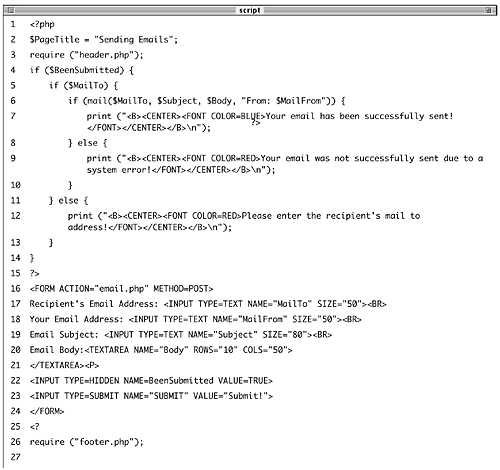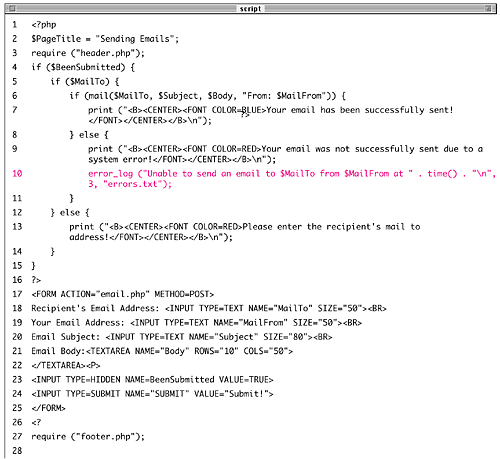Error Reporting and Logging
| I l @ ve RuBoard |
| PHP has fairly good support built into it for both error reporting and handling. While these two concepts won't help you minimize your errors, they will give you another way of learning from them. The error_reporting() function in PHP is used to establish what type of errors PHP should report on. The line error_report (0); turns error reporting off entirely. Errors will still occur; you just won't hear about them anymore. Conversely the line error_reporting (E_ALL); will report on every error that occurs, which PHP does not necessarily do. (The PHP manual lists all the possible levels of error reporting that can be set.) You'll use this function in the last section of the chapter, Using the Die Statement. The error_reporting() tells PHP which errors to report upon while the error_log() function instructs PHP on how to file away error occurrences. error_log ("message", "type", "destination"); When something goes awry, you can have PHP leave you a note in a file (i.e., record the errors in a log) or even email you directly. Prudent use of the error_log() function will allow Webmasters and programmers to keep better tabs on what the Web site is doing. To have PHP email you when an error occurs, add this line to your code: error_log ("message", "1", "php@DMCinsights.com"); Let's alter the email.php script from Chapter 13, Creating Web Applications, so that it makes a note in a file every time it cannot successfully send an email. To use the error_log() function:
Tip If your email application that the server uses to send emails is functioning properly, this script will not log any errors. If you want to see what the script would do if it couldn't send a message, change line 6 to: if (!mail($MailTo, $Subject, $Body, "From: $MailFrom")) { |
| I l @ ve RuBoard |
EAN: 2147483647
Pages: 116




